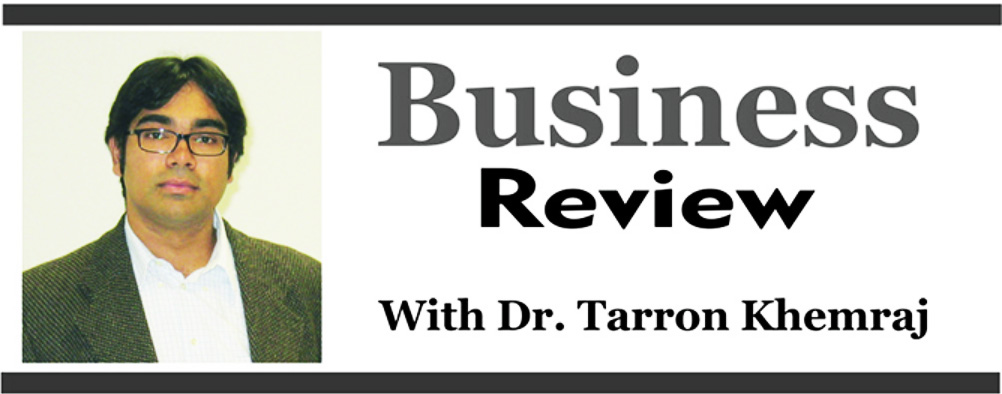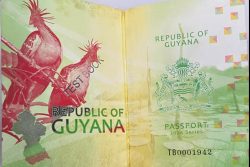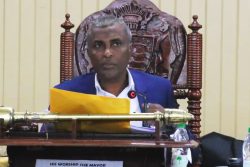Typically, economists do not have the luxury of conducting lab-based experiments as in the natural sciences. Therefore, we have to look at truly exogenous or external events such as a policy intervention or an external shock to study cause and effect. One such external event is the decision by Guyanese policy makers to reserve gold extraction for mainly Guyanese miners. Privatised gold extraction was facilitated by the Mining Act of 1989. By the late 1980s, the world thought that free unregulated private enterprise would lead to superior outcomes compared with the government-planned economic model of the former Soviet Union and the Eastern Bloc.
The decision to allow small-, medium- and a few large-scale Guyanese miners to dominate this economic space was also part of the IMF-World Bank-supported Economic Recovery Programme (ERP) of the mid to late 1980s. Only a few foreign companies were allowed to enter into gold mining and extraction here. Omai gold mine was the largest ever foreign-owned operation in Guyana. Two others were allowed to enter, but they never reached the scale of Omai. However, at present, the industry is almost completely controlled by Guyanese gold miners. It is Adam Smithian in the sense that mining is undertaken by a large number of firms – small, medium and a handful of large ones. The gold industry is not a single large conglomerate like the Western bauxite company of old or GuySuCo.
Therefore, what are the social and economic outcomes of this experiment in domestic resource-extractive capitalism? Firstly, one academic research estimates that the network of Guyanese miners supports the livelihood of about 100,000 individuals. We do not have the kind of statistics to know whether the folks who travel to the interior are given a medical package for obvious health risks. Unlike the old GuySuCo, this industry does not maintain community and health centres for workers. Overall, we cannot say what percentage of the workers and their families can be classified as the working poor. I stand corrected, but I cannot think about a technical school which this Guyanese-dominated industry pays for compared with the excellent ones of the old GuySuCo and large-scale Western bauxite multinationals.
Secondly, at the macroeconomic level, the declared export numbers are quite spectacular. The gold industry exported US$766.7m, US$876.6m, and US$979.3m in 2018, 2019 and 2020, respectively. Before oil export, gold was the country’s most important source of foreign exchange. This is foreign exchange accruing to the Guyanese private sector. Oil export eclipsed gold in 2020 by amounting to US$1.1 billion, but government gets a fraction of the oil export revenues as royalty and profit share. Gold exports produce income flows to the network of Guyanese gold miners. Of course, the oil sector also brings many indirect economic opportunities – beyond the direct flows to government – which one of these days I will measure.
On the down side, the export numbers do not fully reflect the amount that is undeclared or to put it in plain language: smuggled out. I have discussed the issue of gold smuggling in previous columns. Others have also explored this topic and there are newspaper reports in the archives noting the approximate size of undeclared gold exports. It is important to note that the government loses royalty revenues from smuggling. The only way to capture some taxation from these private actors is through the VAT, which has been whittled down slowly in the past few years. Property tax collection is a major problem in this country.
Perhaps the most damaging contribution of smuggling is the corruption of public officials, especially police officers, as well as the weakening of government capacity. It should be no surprise that crime cases cannot be solved and files mysteriously disappear. What is the economic cost of the corruption of institutions? It has to be enormous. Of course, this is not an easy thing to measure, but I hope someone at the University of Guyana will give it a shot. Any measurement would have to consider the economic costs of dangerous crimes, as well as the added security cost for which businesses and families must pay, and the added legal fees and transaction costs resulting from the weakened government capacity. As it relates to dangerous crimes, there is a long-established underworld ‘disciplining mechanism’ for settlement of scores. I can think of three cases of kick down the door in my ancestral village during my time growing up.
A subset of the gold sector recently revealed its preference for non-transparency and lawlessness when it pulled out of the Guyana Extractive Industries Transparency Initiative (SN: Sep 5, 2021). Nineteen miners were reported to have refused to provide the necessary information to GYEITI. The miners’ association subsequently withdrew citing that the Guyanese transparency body was being too intrusive. One of the key benchmarks of EITI, regardless of the country in which it is registered, is it tracks accurate revenues of extractive companies such as gold mining enterprises.
Thirdly, one cannot dismiss the income and wealth inequality resulting from the complete liberalisation of the gold sector. There is a handful of stupendously wealthy miners and traders. Those with economic wealth are able to influence the political process through very generous campaign donations. However, the majority of miners are scraping by with slim margins – particularly those who have to work leased lands owned by wealthy land holders.
Fourthly, it is customary to invoke the nascent oil and gas sector when warning about such adverse outcomes like Dutch disease and resource curse. However, an insightful academic paper by Gavin Hilson and Tim Laing (2017) argued that the Guyanese-owned gold sector has produced a unique resource curse that has played out long before the first barrel of oil was pumped in late 2019.
Albeit somewhat anecdotal, these two authors used an interview methodology that involved systematic discussions with several managers in non-gold sector such as GuySuCo. They found that the sugar industry in particular lost several of its technicians and machinists, trained by GuySuCo’s once excellent technical school, to the gold sector. The industry also lost labourers to hinterland gold employment. This transfer of labour from one sector to the resource-extractive sector is a symptom of the resource curse.
Another symptom is the rise of the service sectors that are fuelled by gold expansion. This primarily involves the associated retail trade for the importation of consumer goods and ‘reconditioned’ automobiles. Helping along the consumption-driven expansion are bank loans. All of these conspire to further make the other export-earning sectors – particularly light manufactures – less competitive.
In conclusion, the complete liberalisation of gold mining has produced at best mixed results. The experience ought to serve as a kind of ‘natural experiment’ for guiding future approaches for organising enterprise in the Guyanese economy. With vision and astuteness, I am convinced the same export revenues, perhaps more, could have been generated under a mixed economic model of a few large-scale enterprises jointly owned by government and private entrepreneurs. Shares could have been sold to many families to diffuse wealth ownership. These shares could have helped in furthering liquidity and deepening of the local stock market. As everyone knows, stock markets only work when there is transparency requiring new careers for deciphering and disseminating released financials.
With partial government ownership, the country could have been better positioned to police the serious mercury pollution associated with the ‘free-market’ sector. Workers could be offered better medical packages. Importantly, better industrial policies involving government-private partnership could easier make the transition to jewellery manufacturing.
Another free-market experiment that resulted at best in mixed outcomes is the complete privatisation of public transport. I will write a column on this one soon.
Comments can be sent to: tkhemraj@ncf.edu









